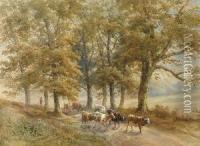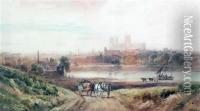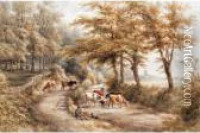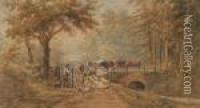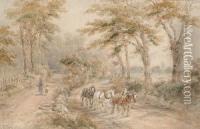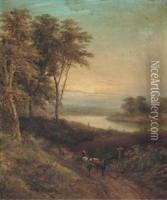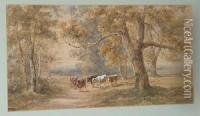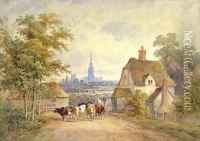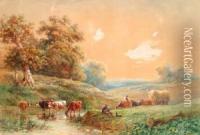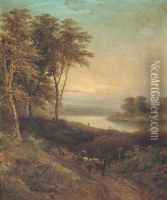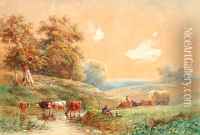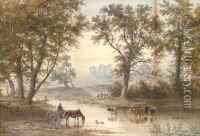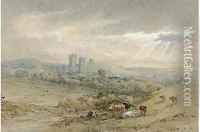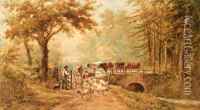Henry Earp Paintings
Henry Earp was a British landscape painter, best known for his idyllic depictions of rural England and his delicate rendering of pastoral scenes. Unfortunately, not much is widely known about his personal life, including his exact birth date. Earp was active during the late 19th and early 20th centuries, a period that witnessed the transition from traditional landscape painting to the more modern movements that characterized the early 20th century art world.
Earp's work is characterized by its finely detailed brushwork and soft, muted color palette, which he used to create tranquil, harmonious scenes of the English countryside. He often focused on the changing seasons and the different times of the day to capture the quiet beauty of the landscape. His works frequently featured meadows, sheep, and bucolic settings that evoked a sense of peacefulness and nostalgia for a simpler time.
Throughout his career, Henry Earp remained dedicated to traditional landscape painting, even as the art world around him underwent significant changes with the advent of Impressionism and Post-Impressionism. Despite not being at the forefront of the avant-garde, Earp's paintings were well-received and continue to be appreciated for their craftsmanship and serene beauty.
Earp's paintings were exhibited at various institutions, including the Royal Academy and the Royal Society of British Artists. His work is now held in private collections and occasionally appears at auction, where it is sought after by collectors who value the quintessential English landscape tradition that Earp so skillfully represented.
Henry Earp's death in 1928 marked the end of a career that had spanned several decades, during which he had honed a distinctive style that captured the essence of the English pastoral landscape. While he may not be as well-known as some of his contemporaries, his contribution to British landscape painting continues to be recognized by art historians and collectors alike.
